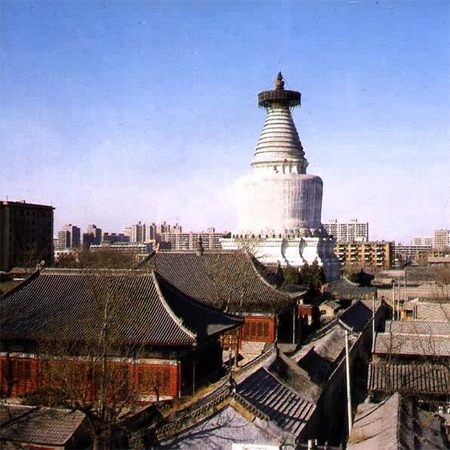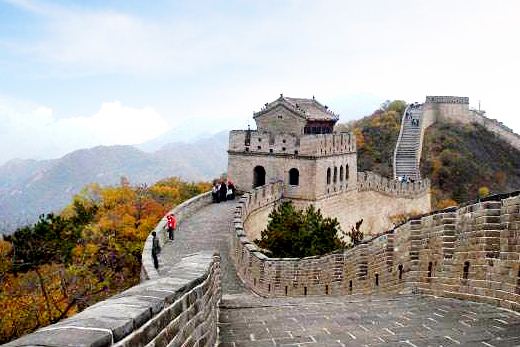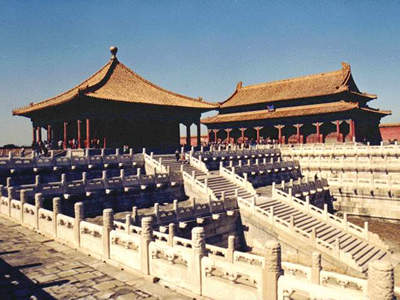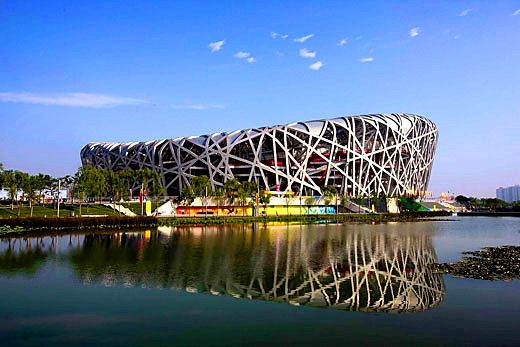Today the Whiter Dagoba stands as a symbol of cultural exchange between China and Nepal. In the Yuan Dynasty, a Nepalese architect named Arnico played an important role in its design and construction. It is said that while in China, Arnico helped to build three pagodas: one in Tibet, another on the Wutai Mountain in Shanxi Province and the third the White Dagoba in Beijing. For his work, the Yuan court posthumously conferred on him the title of "Duke of Lianguo."
third the White Dagoba in Beijing. For his work, the Yuan court posthumously conferred on him the title of "Duke of Lianguo."
Down through the centuries, many wonderful legends have been woven around the White Dagoba, the most popular of which relates to Lu Ban, the "master carpenter" who lived in the Spring and Autumn Period. It is said that Lu Ban repaired the dagoba when it cracked by binding it with seven broad iron hoops. Though impossible to authenticate, this story attests to a high level of skill in forging and riveting in early times.
In 1976, the tremors of the Tangshan earthquake caused serious damage to the monastery buildings. The top of dagoba tilted to one side, bricks and mortar in the comical neck supporting the cupola crumbled off, and the main trunk cracked in several places.
In September 1978, the Beijing Department of Cultural Relics undertook the work of repair and reinforcement. The courtyards, the four corner-pavilions, the Hall of the Buddhas of the Three Ages, the Hall of the Heavenly Kings (Tianwangdian) in front of the dagoba, the Hall of the Seven Buddhas and the dagoba itself were repaired and renovated.
At this time, a number of valuable objects were discovered. A square box, a round box and two oblong boxes of different lengths were found in a hidden recess inside the dagoba. And at its apex a box containing numerous Buddhist scriptures was discovered.
The square box covered with copper and contains a folded map wrapped with finely woven multicolored silk threads. The design of the dagoba appears on both sides of the map.
The larger oblong box contains calligraphy of Emperor Qianlong, four silver urns filled with jewelry, rosaries and coins of the dagoba appears on both sides of the map.
The large oblong box contains calligraphy of Emperor Qianlong, four silver urns filled with jewelry, rosaries and coins of different dynasties, bronze images of the Buddhas of the Three Worlds, a hada (a piece of silk used as a gift among the Tibetan and Mongol groups) and several pieces of brocade. The small box contains only a colorful image of the Goddess of Mercy (Guanyin) and, at the bottom of the image's lotus-flower throne, an alms bowl containing 33 pieces of shelizi (luminous stones reputed to have been drawn from the ashes of Buddha's cremated body). The round box contains a pentagonal Buddhist headdress and an appliqu brocade robe, which were encrusted with a total of approximately 1,000 rubies, sapphires and coral beads.


 About Beijing
About Beijing 


